Topic Question Set
Q 1
:
The plates of a parallel plate capacitor are separated by . Two slabs of different dielectric constants and with thickness and , respectively, are inserted in the capacitor. Due to this, the capacitance becomes two times larger than when there is nothing between the plates.
If , the value of is [2025]
1.60
1.33
2.66
2.33
(3)
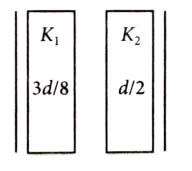
Capacitance without dielectric
Capacitance with first dielectric slab,
Capacitance with second dielectric slab,
Capacitance with air,
Equivalent Capacitance,
or
or ...(ii)
Given
or
Q 2
:
In the following circuit, the equivalent capacitance between terminal A and terminal B is [2024]
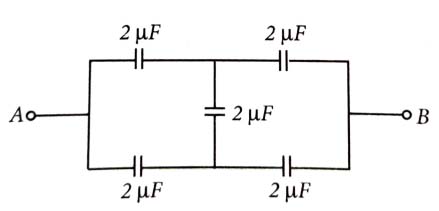

2
1
0.5
4
(1)
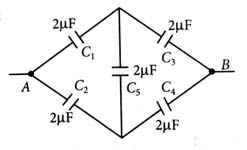
As, Wheatstone bridge is balanced, and becomes ineffective.
Capacitor and are in series.
Similarly, capacitor, and are in series,
Hence, equivalent capacitance between A and B is
Q 3
:
The equivalent capacitance of the arrangement shown in figure is [2023]


30
15
25
20
(4)
Q 4
:
The equivalent capacitance of the system shown in the following circuit is [2023]
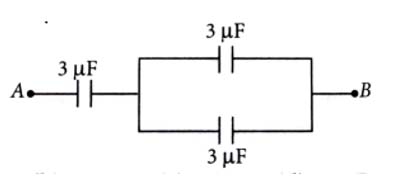

6
9
2
3
(3)
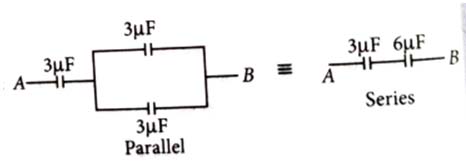
Q 5
:
The equivalent capacitance of the combination shown in the figure is [2021]


3C/2
3C
2C
C/2
(3)
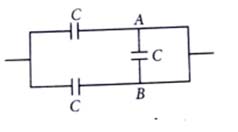
Here, AB arm is short, so the two capacitors C and C in parallel
Q 6
:
A parallel-plate capacitor of area , plate separation and capacitance is filled with four dielectric materials having dielectric constants , and as shown in the figure. If a single dielectric material is to be used to have the same capacitance C in this capacitor, then its dielectric constant is given by [2016]


(3)
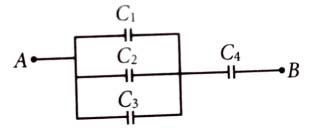
Here,
Given system of and can be simplified as
Suppose,

